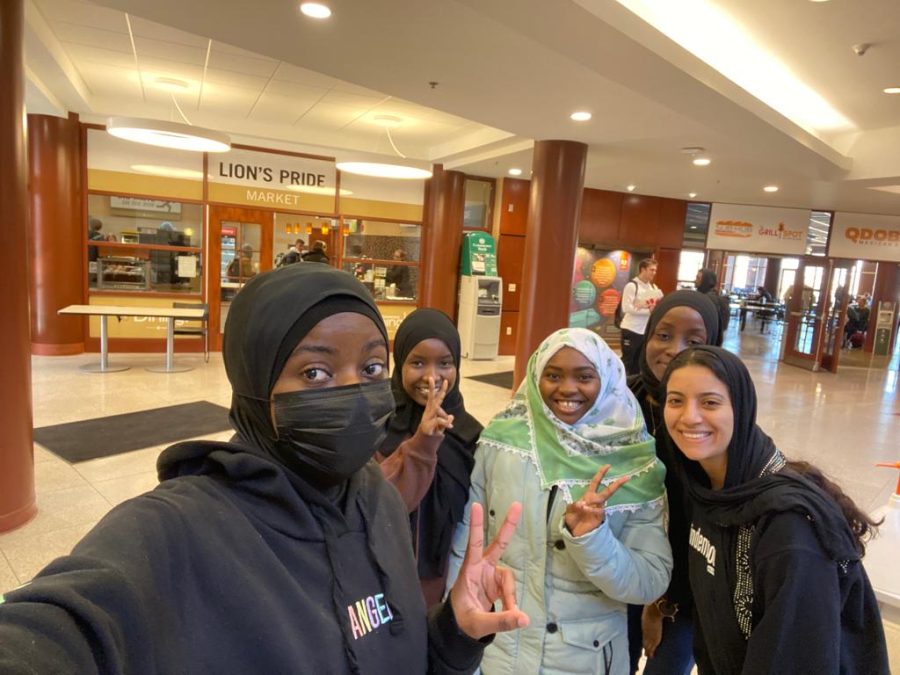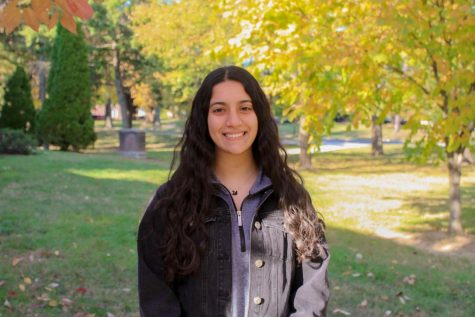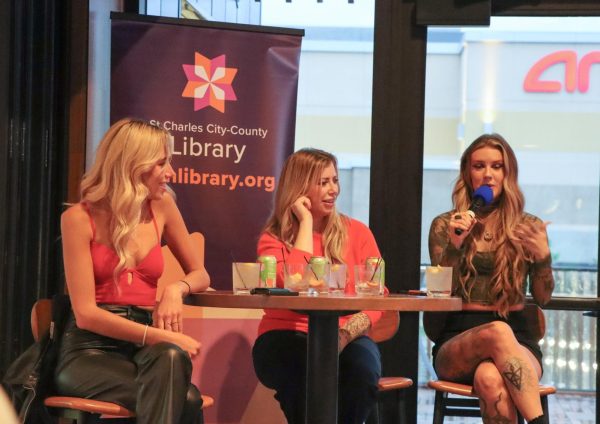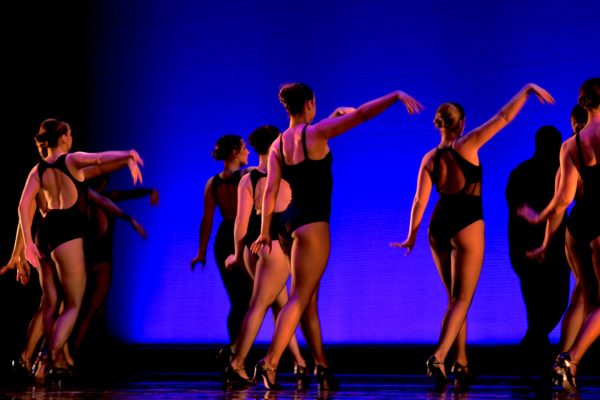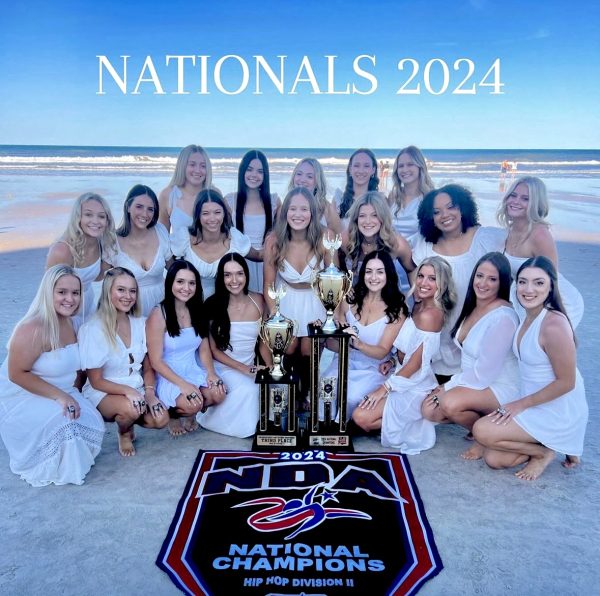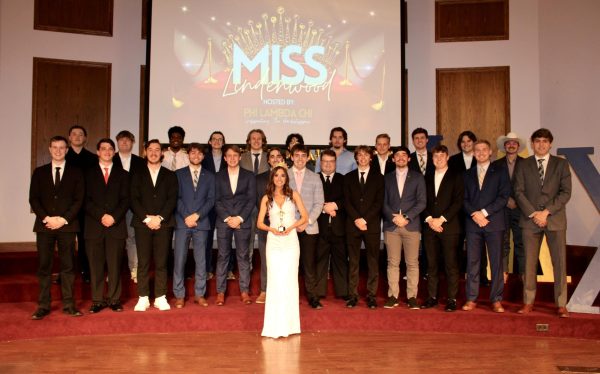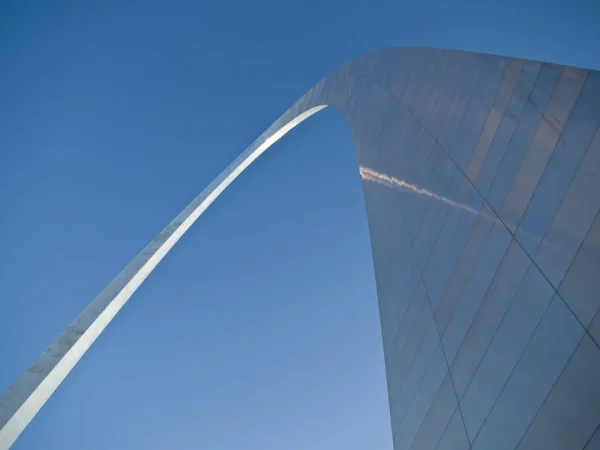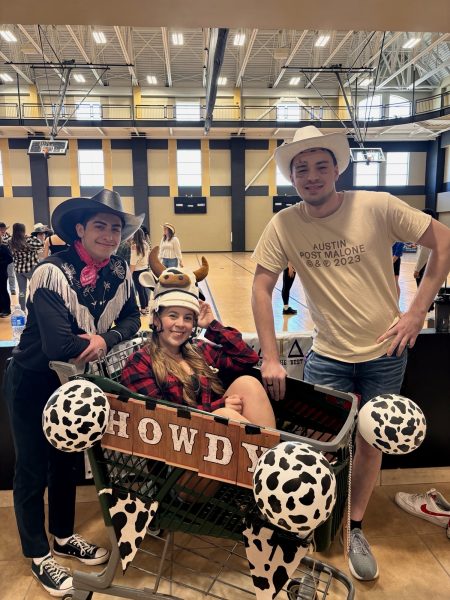National World Hijab Day: The Muslim Student Association educates Lindenwood students
Photo by Rahma Kaluone
From left: Rahma Kaluone, Fatuma Sam, Tanatswa Beta, Zinat Ologundudu and Hadel Abdelkarim wear hijabs on National World Hijab Day on Feb. 1 in Spellmann.
February 3, 2023
Every culture and religion has its own unique traditions including clothing and in the religion of Islam, the hijab is a powerful piece and symbol for Muslim women.
World Hijab Day is set on Feb. 1, and 140 countries worldwide celebrate this day by encouraging women of all different cultures and religions to try on the hijab. Women get to learn about the meaning of the hijab as well as experience what it is like wearing one.
Zinat Ologundudu (olo-gun-du-du) is the Vice President of Lindenwood’s Muslim Student Association. She has been wearing the Hijab for three years now. To her, the Hijab is meaningful and important.
“Hijab means a lot to me, but the most important thing is that I feel protected by it,” Ologundudu said. “It might cover my hair, but it shows my heart.”
The MSA organization came up with this event to be able to celebrate National World Hijab Day.
In the religion of Islam, women decide when they want to wear the Hijab. This day is to recognize the millions of Muslim women who choose to wear it.
“I am very happy about this event because we get to show people what Islam is and how important the hijab is,” Ologundudu said. “It’s also fun to see how people feel when they wear it. I wear it every day and I’m glad we got to introduce it to more people.”
Students were able to try on the hijab and experience what it’s like to wear it.
Tanatswa Beta tried on the hijab and really liked wearing it.
“Beauty is not about how you look or what you’re wearing. You can be beautiful regardless because I still looked beautiful, and I liked it,” Beta said. “It just felt like I was wearing a crown, it was magical.”
Beta explained how it got her thinking about the different cultures and religions.
“We are all connected by one invisible code and that is we believe in a greater power no matter what we call it,” Beta said. “We all believe in one thing and that’s what connects us, we’re all related by that invisible code.”
Beta recalls a time when she learned about women fully covering themselves including their faces also known as the niqab. Women are sometimes forced to wear them even if they don’t want to and the material worn is heavy. But her hijab experience changed her mind.
“When I wore that one it was so light and it was really nice,” Beta said. “If I was wearing this I would be so proud.”
Zoey Williams is another student who tried on the hijab and said that this reminds her of seeing the Amish women back home wearing bonnets and catholic women wearing veils while praying.
“I am a Christian, and even though I have never been encouraged or required to wear a head covering I am drawn to women who wear hijabs or head coverings while praying,” Williams said.
As MSA members were helping students put on the hijab, they would inform students about the significance of the hijab and what it means.
“This was the first time I put on the hijab. It was a cool experience being around women explaining why it was important to them. I felt pretty and honored to wear it,” Williams said.
Student Elena Sanchez enjoyed this exchange of culture.
“For me, the fact that this activity has been done on campus seems to me a very nice gesture, to see each other with something that is a symbol of respect in other cultures is a very nice exchange,” Sanchez said.
Beta explained the importance to learn and educate other people about different religions and cultures.
“You just have to be proud of who you are and don’t let anyone judge you for what you should be wearing or who you are or who you are or where you come from,” Beta said. “Be proud and actually educate people about it.”



